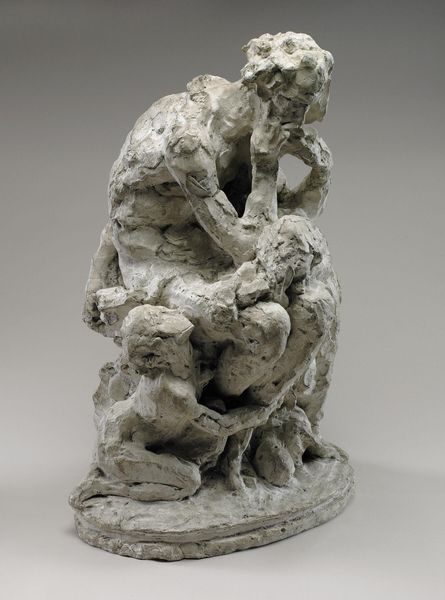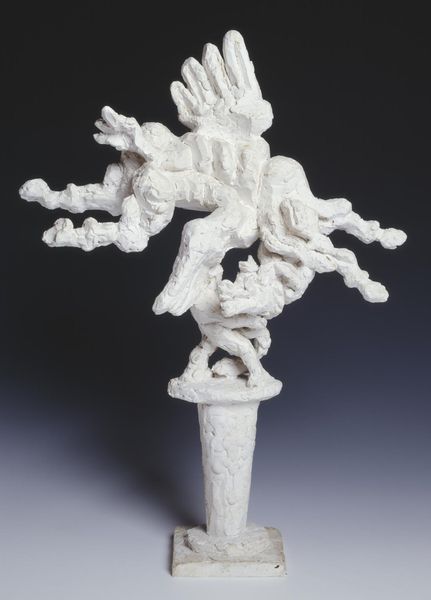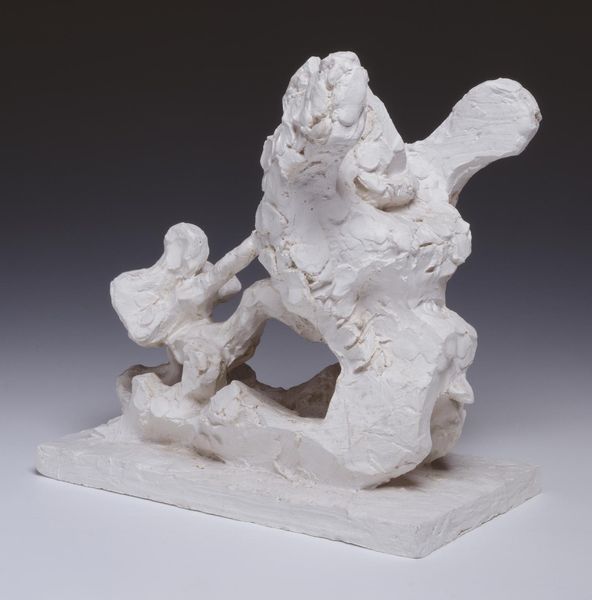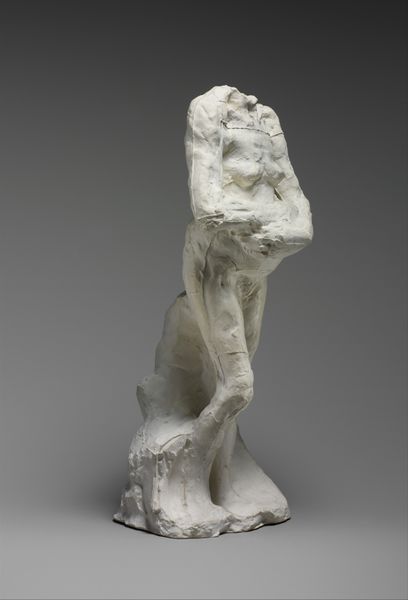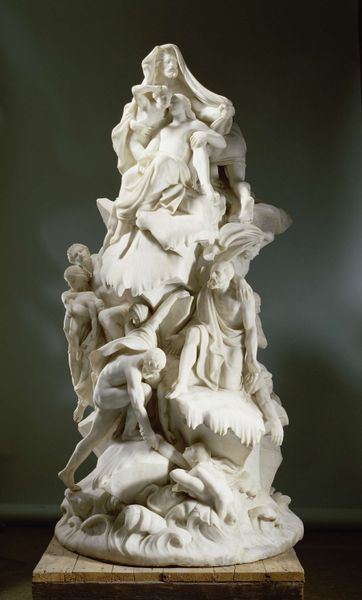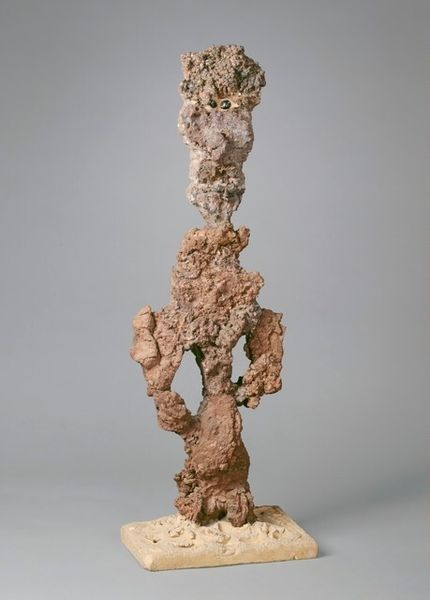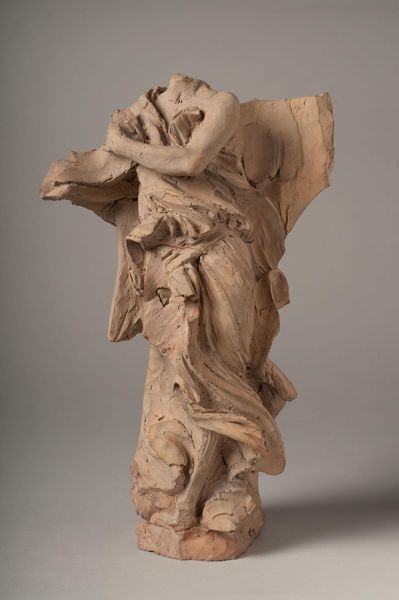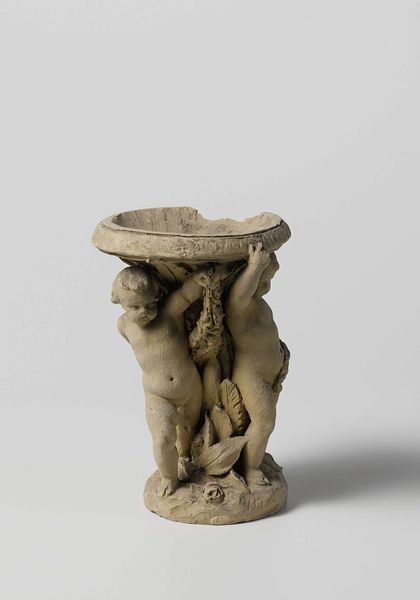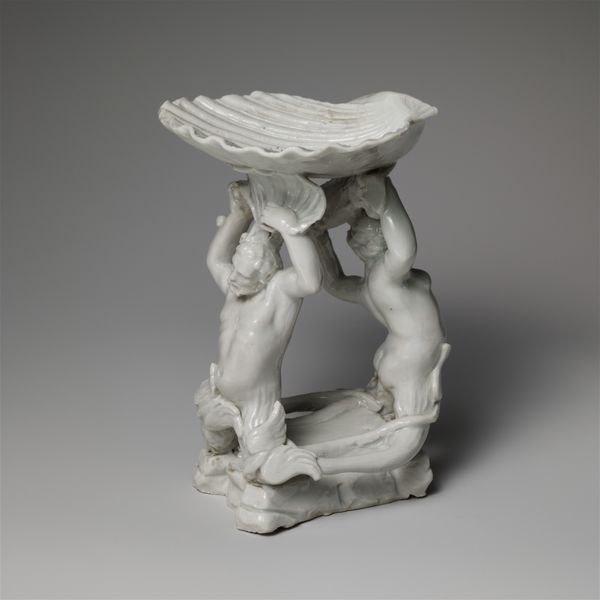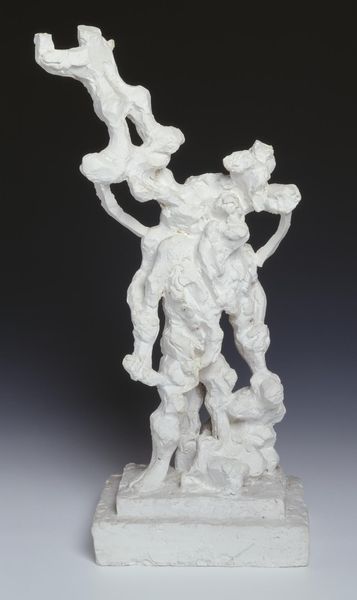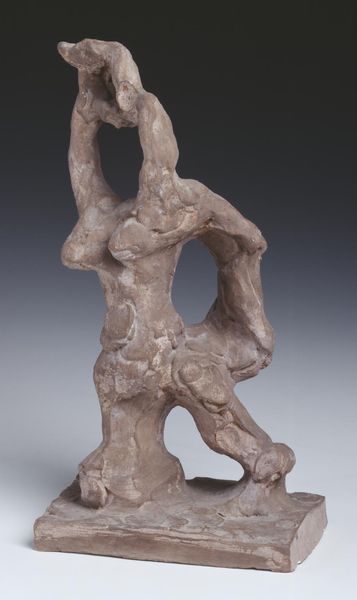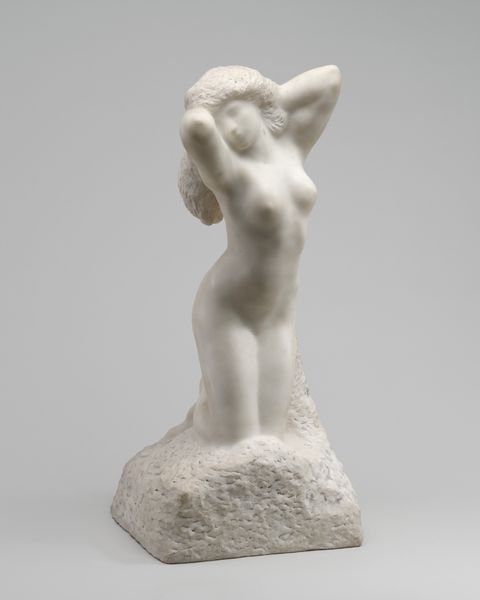
Dimensions: object: 864 x 530 x 260 mm
Copyright: © The estate of Jacques Lipchitz, courtesy, Marlborough Gallery, New York | CC-BY-NC-ND 4.0 DEED, Photo: Tate
Editor: So, this is Jacques Lipchitz's "Sketch for 'Government of the People'," and it's plaster. It feels very...turbulent, like a storm. What do you see in it? Curator: It reflects the anxieties of its time. Lipchitz was grappling with the rise of totalitarian regimes. The sketch is a monument—perhaps a critique—of power structures. Consider how public sculpture often serves to legitimize authority. Editor: Oh, so the turmoil I sensed is intentional? Is it questioning that authority? Curator: Exactly. Notice how the figures are intertwined, almost struggling. This challenges the traditional heroic representation often associated with government. Lipchitz uses form to express a political stance. Editor: I never thought about how the *shape* of a sculpture could be political. It makes you wonder who *gets* to create these public images. Curator: Precisely! And who interprets them, and to what ends. It's not just about aesthetics, but about the politics of representation itself. I've certainly got a lot to think about now! Editor: Same here! Thanks for sharing your thoughts.
Comments
tate 6 months ago
⋮
http://www.tate.org.uk/art/artworks/lipchitz-sketch-for-government-of-the-people-t03481
Join the conversation
Join millions of artists and users on Artera today and experience the ultimate creative platform.
tate 6 months ago
⋮
In 1967, Lipchitz was commissioned to make a monument for the Municipal Plaza in Philadelphia. He described his preliminary model as 'a sort of totem pole', with a pair of nude figures on each tier. According to Lipchitz's account, the upper layer is the Philadelphia city flag, although in the full size sculpture it appears to be made up of reclining figures. The title, which was given by the commissioning body after seeing early designs, is a quotation from Abraham Lincoln's Gettysburg Address. Gallery label, August 2004
